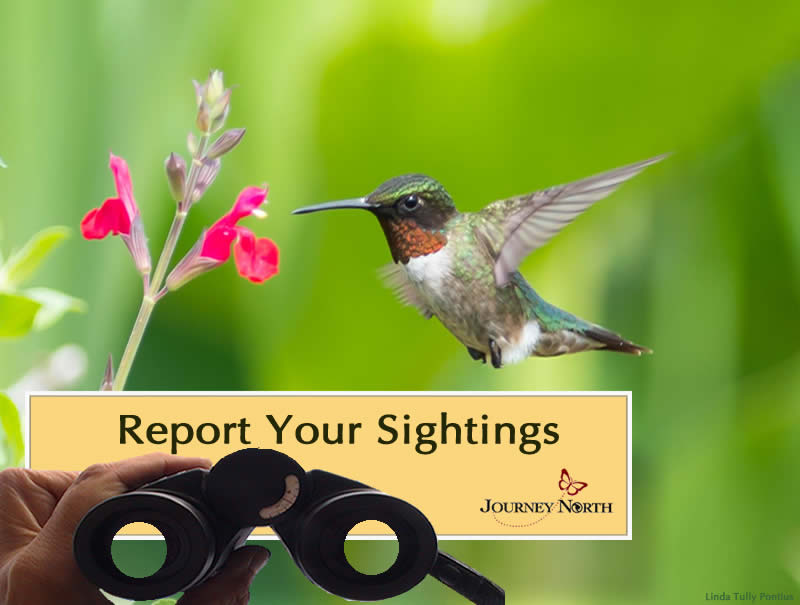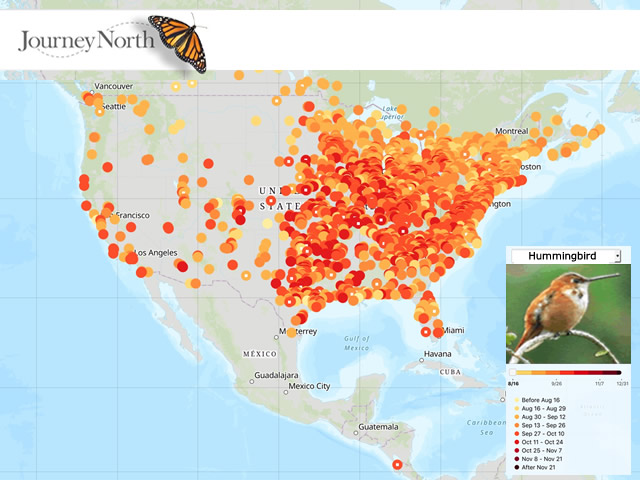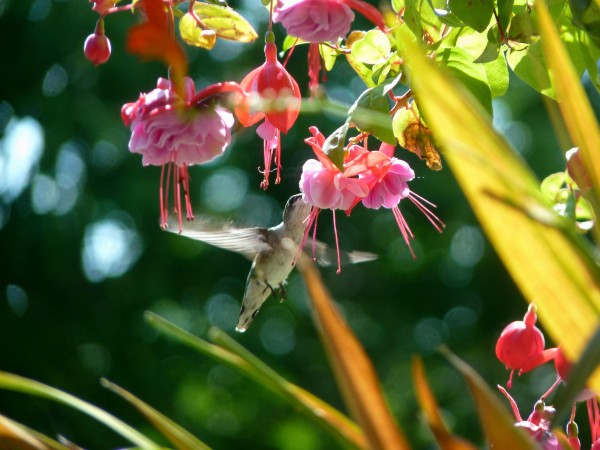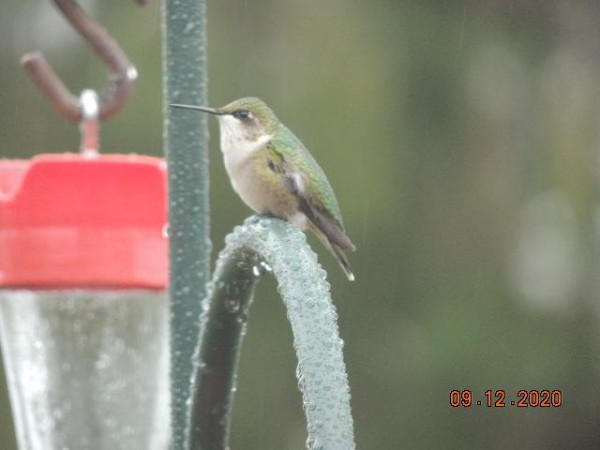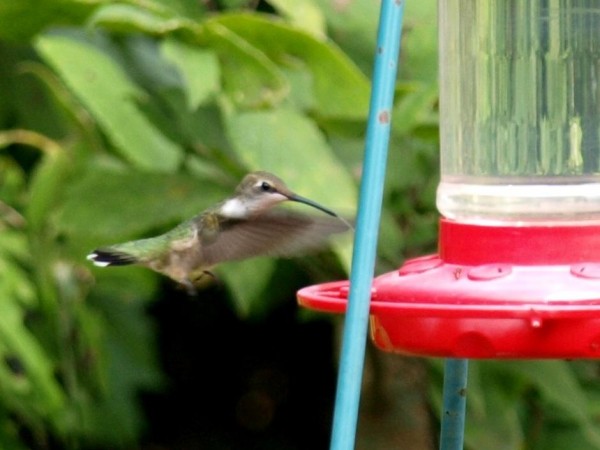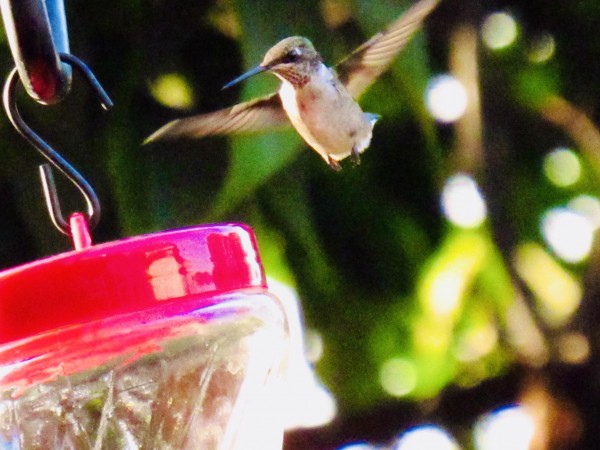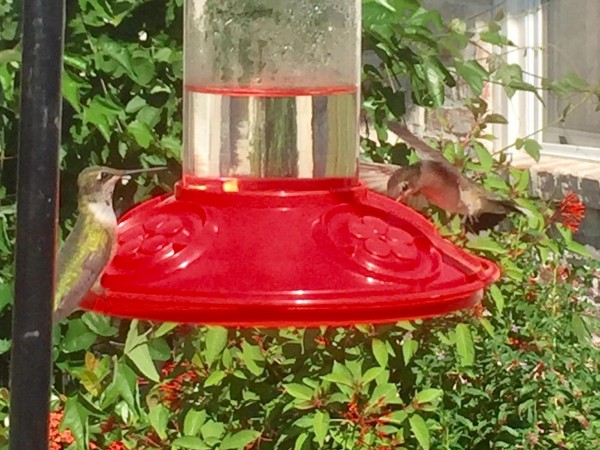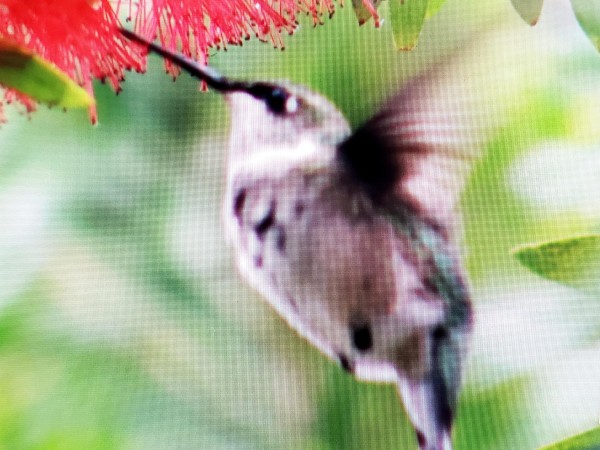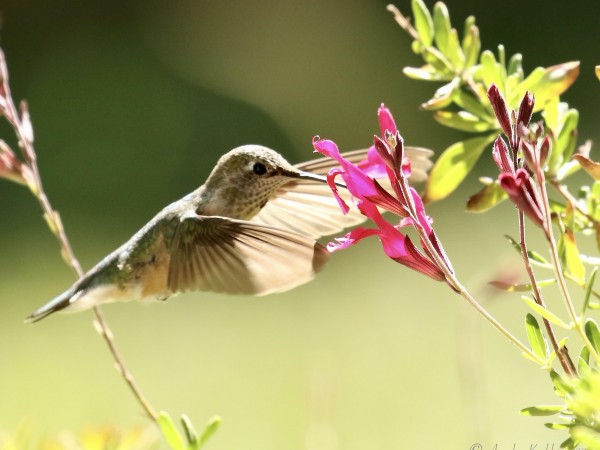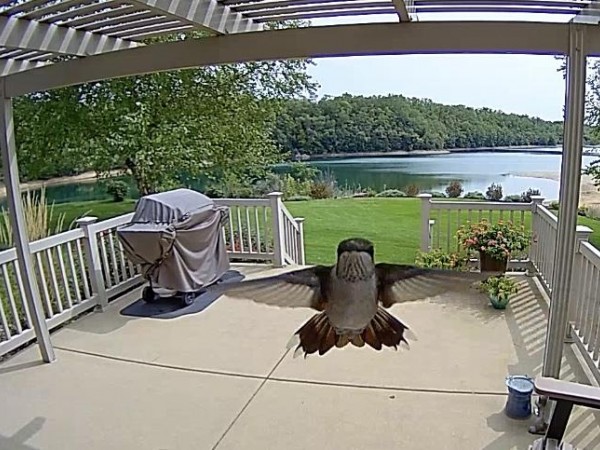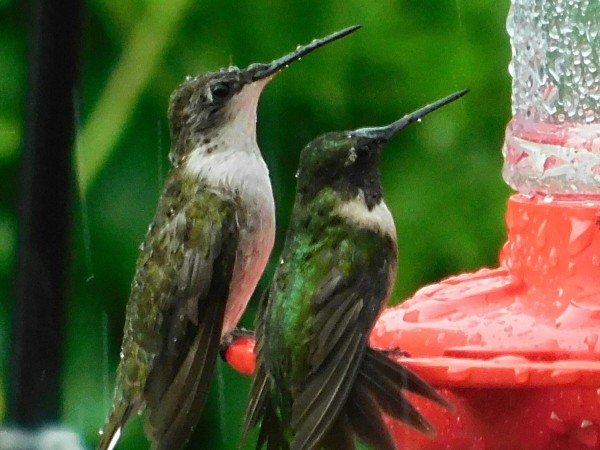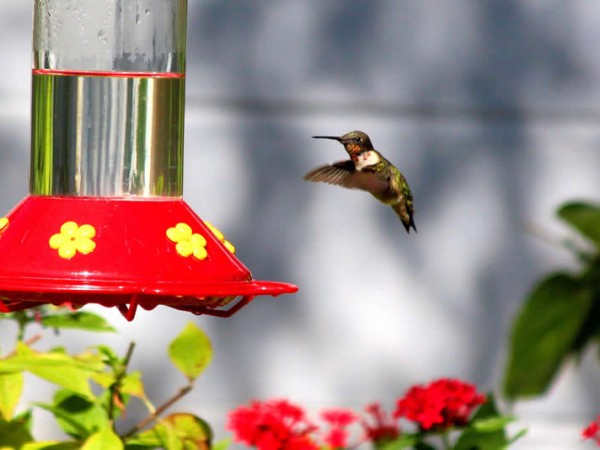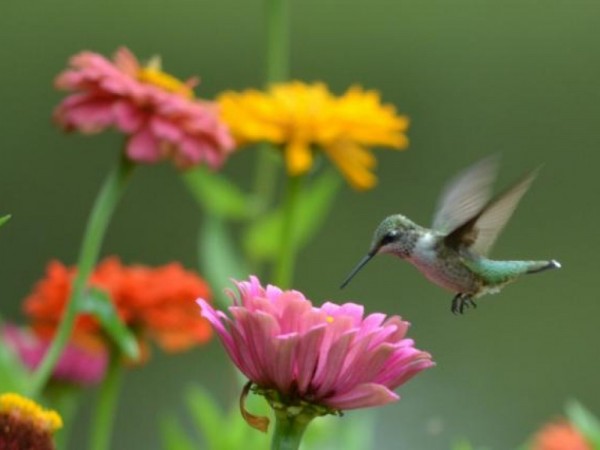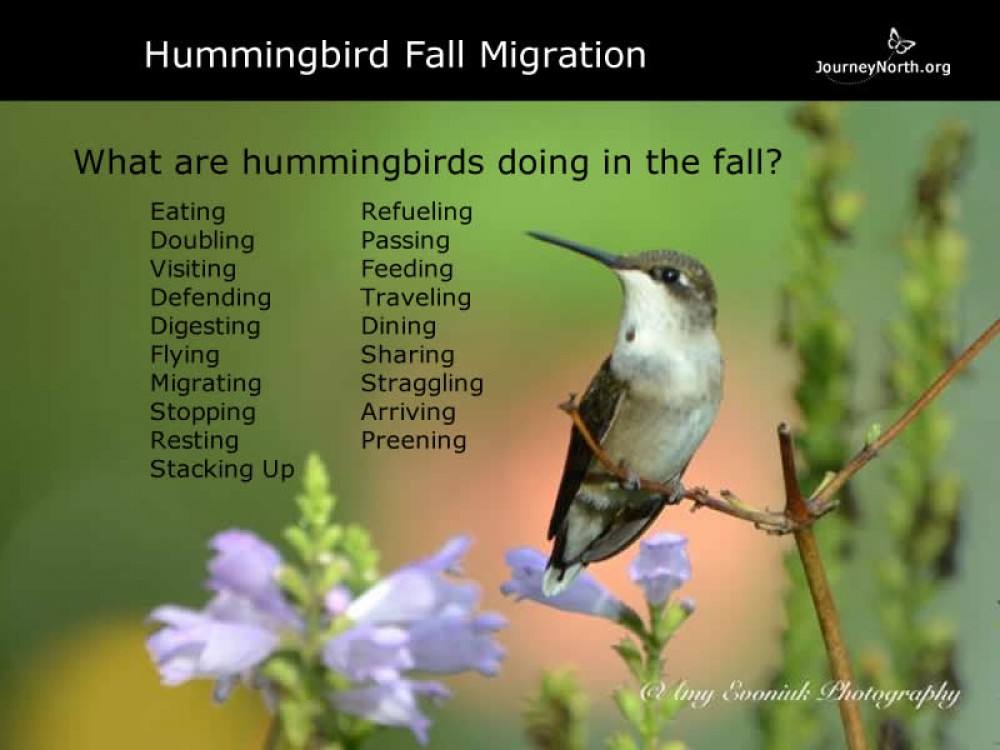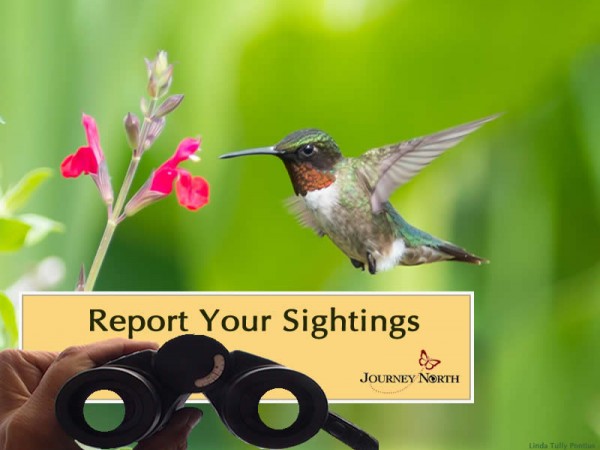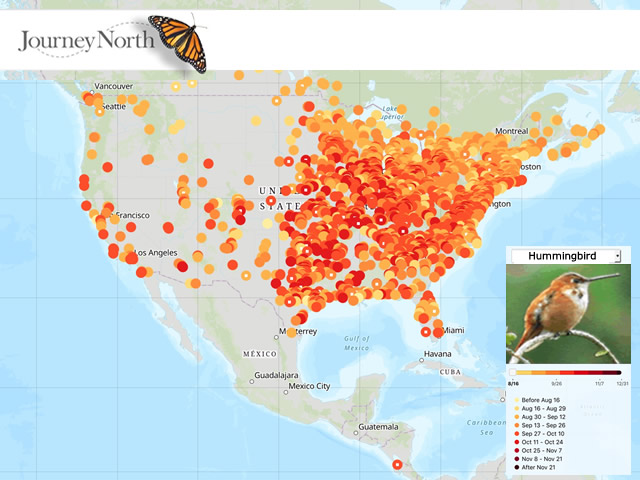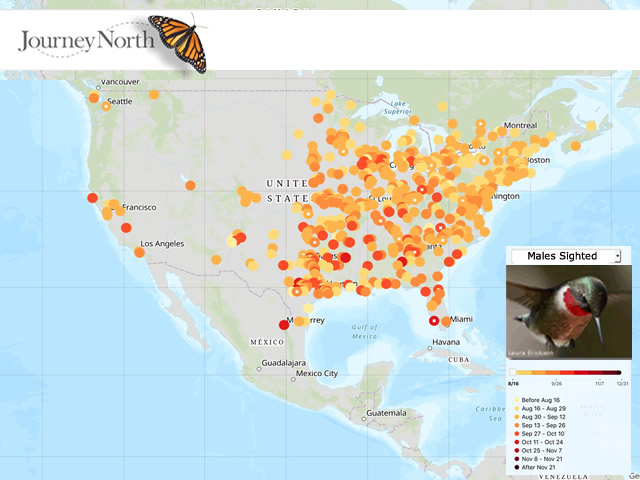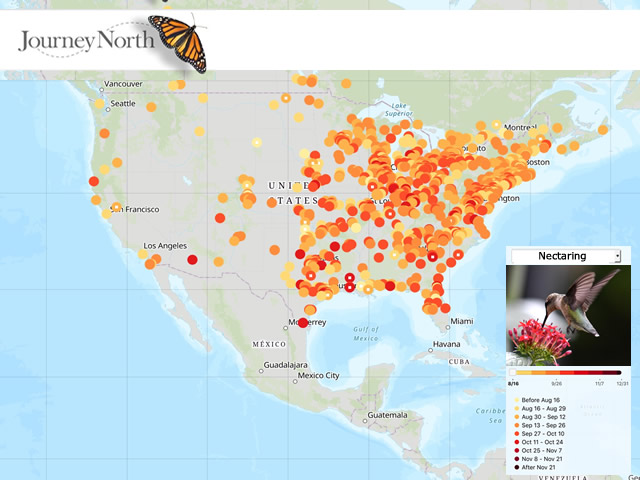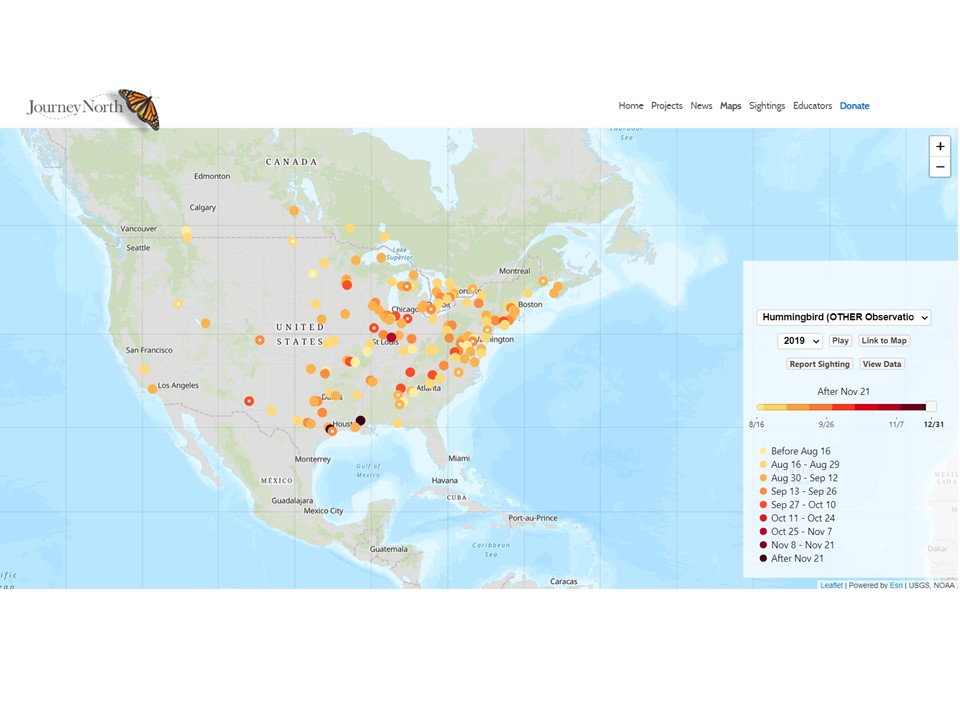Hummingbirds on the Move
Today is the autumnal equinox and hummingbird migration is well underway as sightings continue to flow in.
Hummingbirds still in the north, most are heading south
Fall is here! Day length is shortening, flowers are fading and night temperatures are dropping. While many Ruby-throated Hummingbirds have already left in the northern parts of their breeding range, some females and juveniles still remain.
Marilyn in Owen Sound, ON: "I still have one lone female visiting my feeder every day." (09/15/2020)
Charles in Brookings, SD: "3 or 4 females or juveniles constantly around the feeder for several days." (09/16/2020)
Are you still seeing adult male hummingbirds? If so, we encourage you to report your observations under the category: Fall: Hummingbird Sighting (Adult Male). These reports allow researchers to better determine “last seen” dates.
Farther south in the lower Midwest and South Central US, activity is high.
Jackson in Attica, IN: "We continue to have several (a minimum of 4) hummingbirds, both female and male, feeding from the feeders and among the flowers we have (particularly zinnias and 4 o'clocks). They have grown very chubby compared to their early summer look. Weather has been dry and cooler and they are very active in the late afternoon. There's been a lot of aggression and mid-flight fighting." (09/16/2020)
Schatzie in Lexington, KY: "Still a lot of activity, with one very present male, and several females and many juveniles, who are showing their genders (in the case of the juvenile males, their throats are getting colorful)." (09/17/2020)
Reports along the Gulf Coast are noting more hummingbirds and intense feeding, even as much of the region is experiencing heavy rains due to Tropical Storm Beta. Is this the beginning of a surge in sightings?
Carla in Crowley, LA: "The north-to-south travels are underway here in deep south Louisiana. I stopped counting at 27 Ruby-throated hummingbirds. They are a beautiful flurry of daily activity from twilight past dusk, inhaling a gallon-a-day of nectar from four feeders, while the others feed from all their favorite flowers in our yard. I know that our regulars and the by-passers will eventually leave us for their winter home, yet how lucky we are that so many flock to our yards, like one prolonged glorious goodbye. Their powerful presence never gets old." (09/15/2020)
Billie in Niceville, FL: "Beautiful Hummingbirds in Florida! The biggest I've ever seen. So fluffy! They are eating nonstop from my bottle brush tree. I'm watching them from my window now. 2:30pm. Love them! (09/21/2020)
Mary in Corpus Christi, TX: "It [hummingbird] was enjoying feeding at the feeder in the backyard even though it rained all day." (09/21/2020)
Out West
Our thoughts are with everyone affected by the ongoing wildfires out west. It appears as thought the fires are also taking a toll on hummingbirds.
Tom in Hanford, CA: "The [hummingbirds] numbers have declined due to the fires in California and with the heavy layer of smoke and air quality levels in the very unhealthy levels. Think they got out of Washington, Oregon and California to their home land with fresh air. With that said I normally fill my 2 cup feeders every other day and with the hazardous conditions it is now down to weekly to provide fresh food for those are still around. Will cut my four feeders down to one feeder soon if the numbers continue to decline. Sorry to see such a fast decline in my 30+ years of feeding hummingbirds. I would normally have 50+ during this time of year on the migration south." (09/15/2020)
In Colorado, frigid temperatures are putting extra strain on Broad-tailed Hummingbirds.
Angela in Elizabeth, CO: "As of today, I have 5 hummingbirds: One female Broad-tailed, 3 immature Broad-tailed, and one adult male Broad-tailed. Since our unusual hard freeze and temperature drop, all the birds were having a very difficult time. I did all I could do, to change out hummingbird feeders, every two hours, to provide room temperature nectar, and get them through 4 days of frigid cold temps! In a 24 hours, our temps went from 89 degrees, to 20 degrees!" (09/16/2020)
Fewer Mid-day Sightings
Why do hummingbird activity levels tend to peak in the evenings and mornings, and remain relatively quiet during the day? Ornithologist Laura Erickson explains:
"Hummingbirds are migrating by day. They land while it’s still afternoon if they see a good place to fuel up for a few hours. Then they find a safe place to sleep. They must also do a lot of feeding again in the morning before they take off. It's different for the local hummingbirds not yet on the move: Mid-day is when they can get the most insects and when most flowers are open so they can get natural foods. But locals also do the quick-energy feeding frenzy in the evenings and mornings."
Keep Reporting
Journey North citizen scientists continue to contribute invaluable observations. Each report is a jewel of information and adds to our collective understanding of hummingbird migration.
Keep reporting and thanks for all you do on behalf of hummingbird tracking!
Fall Migration 2020
Report at least once per week as long as hummingbirds are present. Do not report when you no longer see them.


